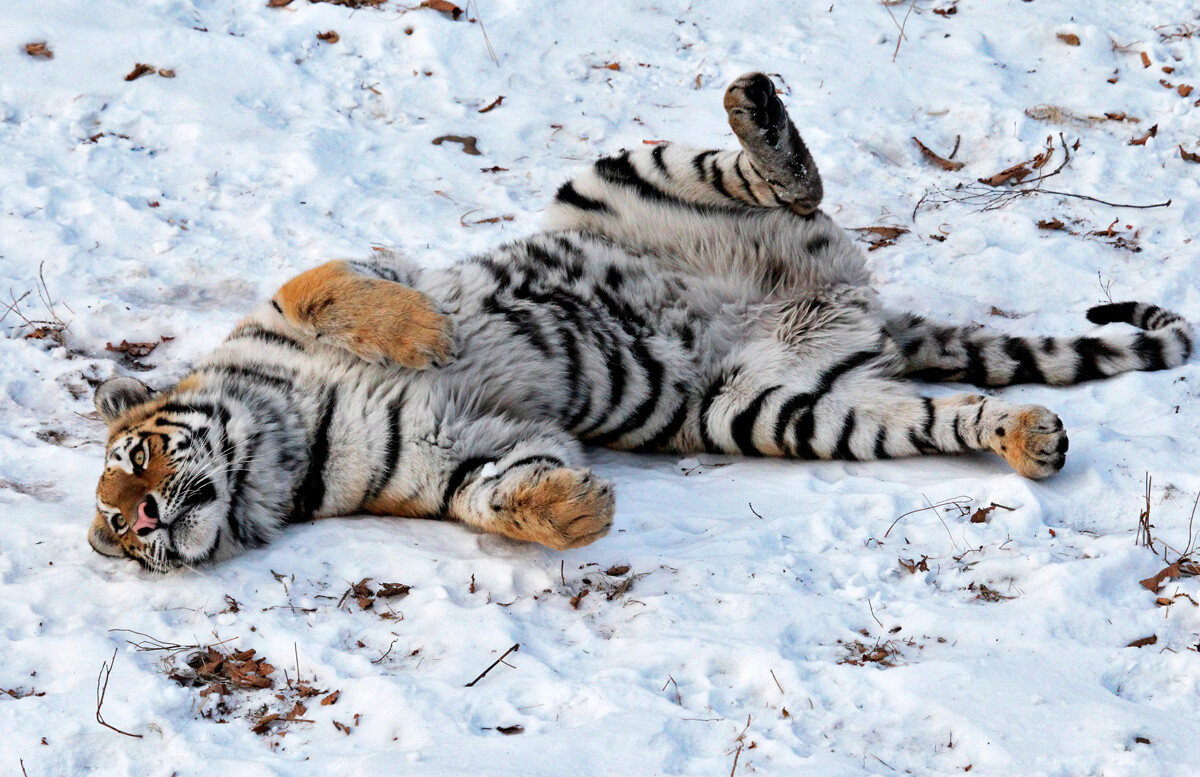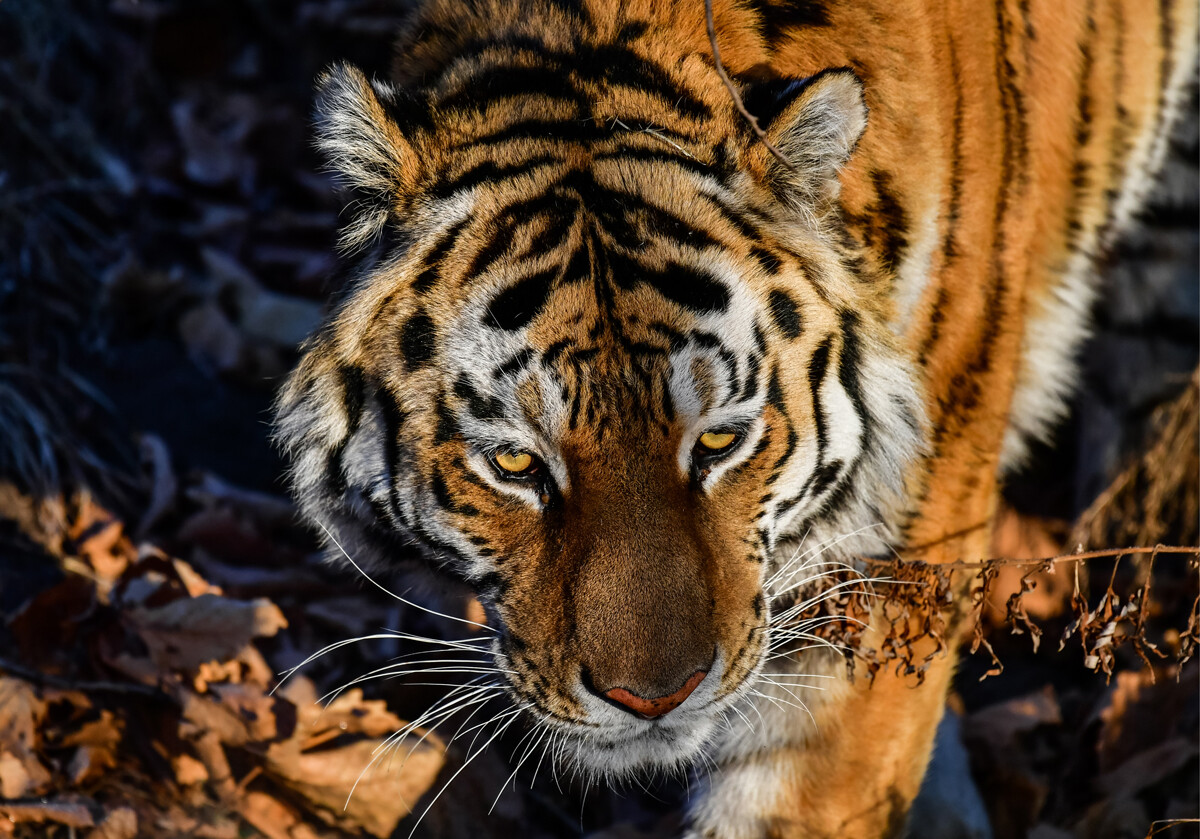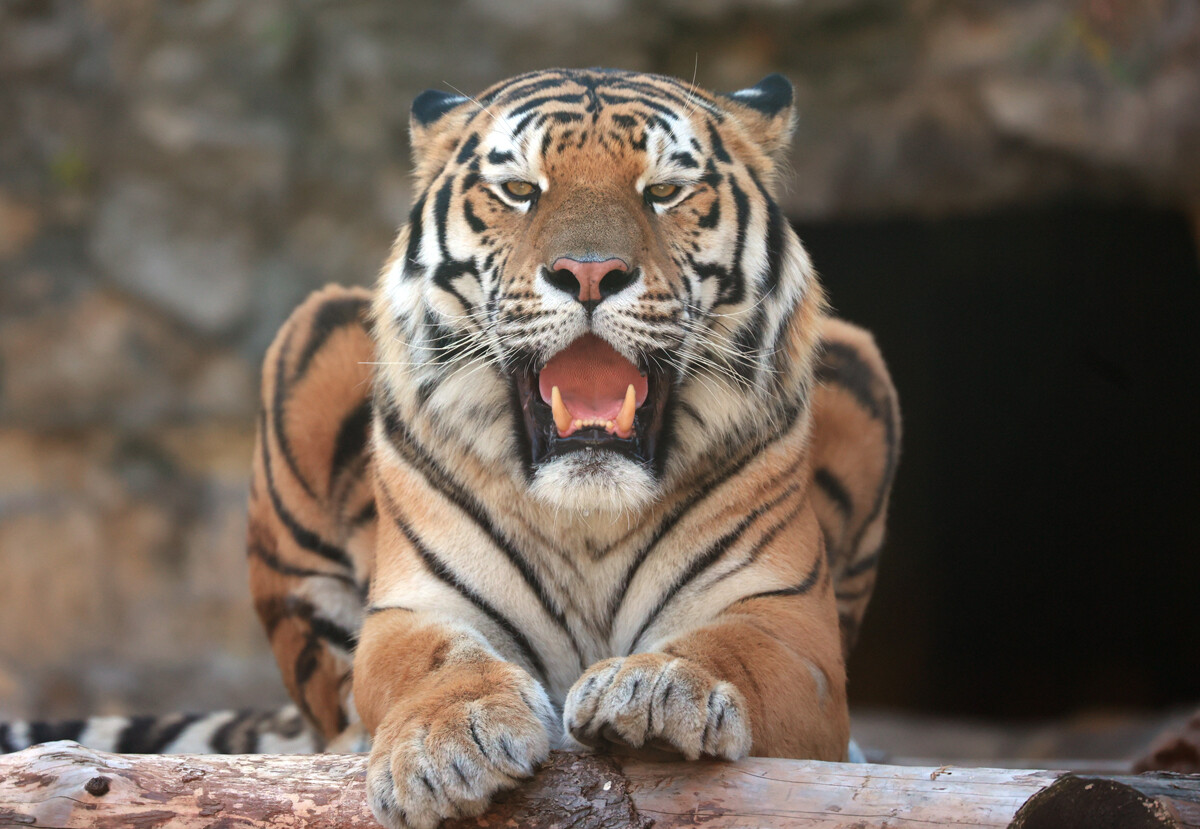

Around 95% of the Amur tiger population lives on the territory of the Russian Federation - in the Primorsky and Khabarovsk territories, Amur Region and Jewish Autonomous Region. The rest inhabit northeastern China and in some parts of North Korea. Therefore, it is also called Ussurian, Siberian, Manchurian or North Chinese tiger.

Among the six existing subspecies of tigers, the Amur tiger is the largest and strongest. An adult male can grow up to more than two meters in length in its life and can weigh more than 250 kg. The Sumatran tiger is quite small in comparison: an adult male only weighs up to 140 kg.

It is the only one from all tigers that builds up a fat layer of 5-6 cm on its belly ahead of winter. And its fur is so thick that it’s not afraid of severe frosts, harsh winters and snow covered terrain.

The ‘King Tiger’ requires royal expanses! A male Amur tiger controls a territory of up to 100 square kilometers. It can walk up to 41 km per day, but, on average, walks around ten kilometers. The top speed of the animal is up to 72 km/h. It can jump 10 meters in length and five meters in height, but quickly – after 30 seconds or so – gets tired of such a pace. If a hunting spurt is not successful, the tiger will rather lie down to rest than chase its prey far away. The Amur tiger does not attack humans, but is keenly interested in their movements, especially while protecting its territory.

The Amur tiger is an omnivore: it can even eat a bear, but prefers deer, wild boar and fish. For a full diet, it needs 50-70 ungulates a year and a fully grown male can devour up to 20-40 kg of meat at a time – with an average daily intake of about 10 kg. It prefers to hunt in the evening, night and early morning and mostly rests during the day.

The Amur tiger was first described in 1844. In the 19th century, there were around a thousand documented to be living in Russia. However, in the 1930s, there were already less than thirty. In 1947, the USSR introduced a ban on hunting the Amur tiger. The animal was included in the Red Book of endangered species.
Today, illegal hunting and keeping of red-listed species is punishable. And these measures to protect the rare predator have contributed to an increase in its population. In 2022, about 750 Amur tigers were registered in Russia. The highest population density is in the ‘Land of the Leopard’ national park and in the ‘Kedrovaya Pad’ reserve in Primorsky Territory.

The average life expectancy of an Amur tiger in the wild is around 15-18 years. At the age of four, they enter mating age. Tiger cubs feed on their mother’s milk for up to six months, stay near their parents until the age of two and then begin their first attempts at hunting. The father also lives nearby, but does not participate in the upbringing of his offspring.
Dear readers,
Our website and social media accounts are under threat of being restricted or banned, due to the current circumstances. So, to keep up with our latest content, simply do the following:
If using any of Russia Beyond's content, partly or in full, always provide an active hyperlink to the original material.
Subscribe
to our newsletter!
Get the week's best stories straight to your inbox